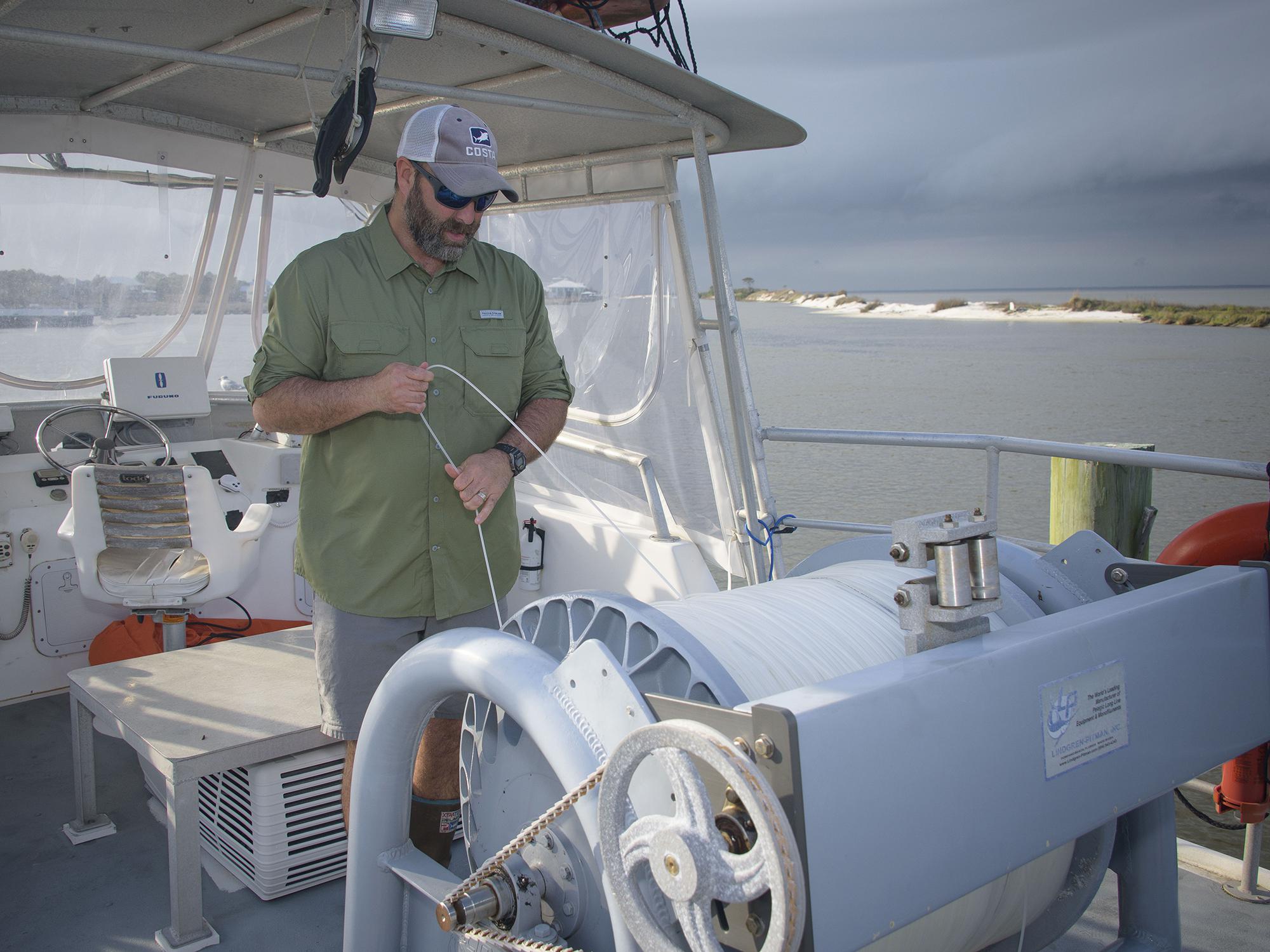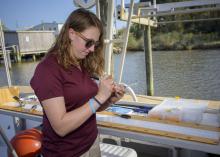Information Possibly Outdated
The information presented on this page was originally released on March 23, 2018. It may not be outdated, but please search our site for more current information. If you plan to quote or reference this information in a publication, please check with the Extension specialist or author before proceeding.
Extension Service works with Gulf shark species
BILOXI, Miss. -- Sharks of the northern Gulf of Mexico have a strong advocate in Mississippi State University Extension Service fisheries specialist Marcus Drymon.
Drymon, originally from Kentucky, has been fascinated with sharks from a young age. His dad, an airline pilot, took him on annual scuba diving trips to watch sharks. His college career focused on marine sciences, leading him to a career in marine biology, first at the Dauphin Island Sea Lab in Alabama.
Drymon joined the MSU faculty in August 2017 as an assistant Extension professor based at the Coastal Research and Extension Center in Biloxi.
“My work is very applied,” Drymon said. “One of my main research projects is a long-term shark monitoring program. We sample, tag and release sharks to learn about their distribution and relative abundance. That information is ultimately used in stock assessments for sharks in the northern Gulf of Mexico.”
Drymon said the most common sharks in the Gulf of Mexico are the Atlantic sharpnose, blacktip and blacknose sharks. All are abundant and pose no danger to humans. Other species, such as great hammerhead and scalloped hammerhead, are listed as threatened or endangered outside the Gulf of Mexico.
“I would like people to realize that sharks are incredible creatures,” Drymon said. “Here in the northern Gulf of Mexico, we’re fortunate to have lots of different species of sharks. Studying that diversity of sharks gives you an appreciation for how phenomenal they are.
“Studies are showing that the more facts people have and the more they understand about sharks, the less afraid they are. The feeling changes from fear to awe and appreciation,” he said.
Catching sharks is an increasingly popular activity with recreational anglers. Drymon said many of these anglers catch the sharks, photograph them and let them go.
“That segment of stakeholders is more likely to engage in conservation initiatives for sharks,” Drymon said. “Catch and release is only effective if the shark lives, so one of my research objectives is to put satellite tags on the kinds of sharks anglers like to catch so I can see if the shark lives once it’s released.”
Sharks are highly migratory, and the federal government sets the majority of regulations on shark fishing.
“The data I’m collecting is being used directly to inform these conservation and management plans,” Drymon said. “My work helps to ensure these populations remain viable in the future.”
Drymon said several shark species in the Gulf can be sustainably harvested and consumed just like any other fish, such as grouper or flounder. Federal restrictions govern which sharks can be harvested and which ones are protected.
“There are sharks in the near-shore waters of Mississippi and Alabama, and there have always been sharks in these waters,” Drymon said. “Humans and sharks are vital to the ecosystem, and clearly, both can coexist peacefully.”
Emily Seubert, an MSU Extension Service program associate, is working on a master’s degree from the University of South Alabama. Her research is focused on the structure of feeding relationships among numerous shark and ray species across the north-central Gulf of Mexico. She is specifically concerned with how the high diversity of shark species ties in to ecosystem resiliency.
“I collect blood plasma samples from sharks captured from Louisiana to Alabama,” Seubert said. “These samples provide dietary information for each individual without having to sacrifice the animal for stomach contents.”
Analysis of this data is showing trends that will help researchers understand apex predators across these ecosystems. Working with Drymon, Seubert learned how to catch sharks with bottom longline gear, and her work is expanding on his findings.
“I love the extreme diversity of shark species that I have been able to encounter in a short time in the Gulf of Mexico,” she said. “The fact that these incredibly diverse individuals are able to partition resources and coexist in a relatively small region consistently amazes me.”






